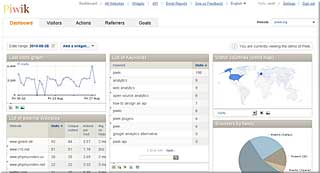Last update : August 27, 2013
Whereas in the graphic and computer world we have square video pixels, in the old video world (PAL and NTSC) we have non square video pixels (Recommendation ITU-R BT.601-4). Video pixels in the HD world are, fortunately, square.
The term which describes this squareness or non-squareness is the pixel aspect ratio, expressed as a fraction of horizontal (x) pixel size divided by vertical (y) pixel size.
The PAL (576i) pixel aspect ratio (PAR) is 59/54 (1,094), the NTSC (480i) pixel aspect ratio is 10/11.
The pixel aspect ratio must not be confused with the display aspect ratio (DAR) or where the common values are 4:3 and 16:9 (anamorphic format).
When doing a conversion of a video file from one size or format in another size or format, the resulting video geometry will be stretched or squished if the pixel aspect ratio is not accomodated. Usually the errors are small and there is no great damage in the result if the correct conversion factor is ignored. The difference can become critical if filters are applied or other synthetic effects are added.
More detailed informations are available in the lurker’s guide to video from Chris Pirazzi.
Another problem is that the commonly used digital video resolutions don’t exactly represent the actual 4:3 or 16:9 picture aspect ratios. All commonly used modern digital video standards are based on their counterparts in analog video standards to avoid too many compatibility issues. The most used sampling rate in PAL and NTSC video systems is 13,5 Mhz.
PAL has a line length of 64 µs, of which 52 µs contains actual image information, the rest is reserved for horizontal blanking. 52 µs × 13.5 MHz = 702 samples per scanline. In the vertical direction, there are 574 complete lines and 2 half lines, giving a total of 576 scanlines. Thus, the active image area for a 4:3 or 16:9 frame at 13.5 MHz sampling is 702×576 pixels.
For NTSC, the same calculation gives an image area of 711×486 pixels.
Instead of using 702 or 711 samples per line, the digital video standard defines 720 samples (= pixels) per line to allow for little deviations from the ideal timing values and to use a common sampling rate of 13,5 Mhz.
When converting videos from one size to another, cropping or adding black side edges to the video is necessary to keep the correct image aspect ratio. Fortunately some video conversion softwares care for these conditions.
More details about square and non square video pixels and a conversion table are available in the Quick Guide to Digital Video Resolution and Aspect Ratio Conversions maintained by Jukka Aho. Another useful tutorial about Pixel Aspect Ratio is available at the doom9.net website.


